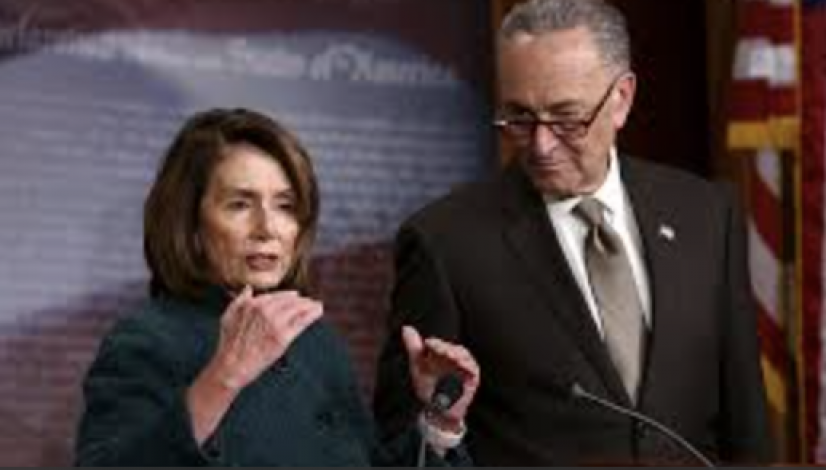Trump tax plan makes rich pay larger share; why is the left against it?

Heads up House Minority Leader Nancy Pelosi (D-Calif.)! The GOP tax bill is not a “scam” as you have called it. Rather, it is a liberal’s delight, which makes our tax code even more steeply progressive than it was before. Remind us again, why did you vote against it?
An analysis by the nonpartisan Tax Policy Center (TPC) estimates that under the Republican bill, high-income Americans will pay an even larger percentage of the country’s overall income taxes in 2018 than they did before, while people in lower brackets will pay a smaller amount.
Specifically, the TPC estimates that the 20 percent of Americans that earn $150,000 or more will account for 52 percent of the country’s income, unchanged from last year, but will pay about 87 percent of total income taxes, up from 84 percent in 2017. Isn’t that a “fair share”?
The bottom 60 percent of Americans, with earnings below roughly $86,000, will account for 27 percent of the country’s income but will not pay any income tax at all. In 2017, that lower tier contributed 2 percent of income taxes.
The country’s biggest earners, those who make over $730,000 and are in the top 1 percent, will pay 43 percent of all income taxes; under the prior tax regime, those folks contributed only 38 percent of income taxes.
So, where’s the beef? If the tax cuts actually raise the portion of income taxes being collected from the wealthy, what do those on the left, who have been slamming the tax bill, find so objectionable?
How can Senate Minority Leader Chuck Schumer (D-N.Y.) and Sen. Elizabeth Warren (D-Mass.), both of whom have described the cuts as a “punch in the gut” to the middle class, be so opposed to it?
Not only do the tax cuts actually hike the percentage of income taxes being collected from high earners, they have also resulted in millions of workers receiving pay hikes and one-time bonuses. Voters should ask, why did every single Democrat vote against the bill?
Democrats have consistently lied and misrepresented the tax revamp that Republicans and President Trump pushed through last year, fearful that its benefits for individuals and for the economy would be a big selling point for the GOP in the midterm elections come November.
Early on, the attacks drew blood, turning the public against the legislation. Imagine, a bill that cuts taxes for more than two-thirds of Americans was initially deeply unpopular. That’s the power of the anti-Trump media.
In recent months, Americans have wised up to the Democrats’ nonsense, with polling showing the tax reform package gradually gaining in popularity. By mid-February, a New York Times Survey Monkey pollshowed 51 percent of the country approved of the tax bill, up from only 37 percent in December.
With the rise in popularity has come a narrowing of the so-called “generic ballot,” with the Democrats’ lead over Republicans shrinking to under 10 points — just as Democrats feared.
Critics have blasted Trump’s tax bill because they say it is a hand-out only to the wealthy, a charge the Tax Policy Center study undermines. Yes, the largest dollar gains go to people in higher tax brackets, but that is the inevitable outcome of tax cuts. It’s hard to reduce taxes for people who don’t pay any.
Democrats also complain that the tax package disproportionately favors businesses. They are correct. The main thrust of reforming our tax code was to make U.S. enterprises more competitive with rivals overseas, for good reason.
Our statutory rate was the second-highest among developed nations, and a clear impediment to enticing foreign-based firms from shifting part or all of their operations state-side. Even more worrisome, it encouraged U.S. multinationals to move parts of their companies to lower-tax locales outside the U.S.
Another important ambition was to bring the U.S. into alignment with other countries in how we treat profits earned overseas. We were unique among G-7 nations in demanding that overseas earnings be taxed at U.S. rates when the funds were repatriated. This led to a dysfunctional multi-trillion-dollar build-up of cash held overseas.
The tax bill solved the problem by adopting the “territorial” system used by nearly all other developed countries. The change makes it cheaper to repatriate funds, which has already inspired Apple and other companies to bring hundred of billions of dollars back to the U.S.
Even though President Obama advocated reforming our outdated and uncompetitive business tax code, Democrats have refused to acknowledge that cutting corporate taxes might benefit workers and the U.S. economy overall.
Yet, we have thousands of small and large firms across the country sharing the proceeds of the tax-change windfall, giving millions of employees one-time bonuses and pay hikes.
Still, the most important result of the tax bill is the nearly unprecedented spike in consumer and business confidence that began when President Trump was elected and that hit new highs in recent months as lower tax rates kicked in.
The optimism among business managers is especially key, as it has already spurred the first bounce in capital spending that we have seen in years. Higher spending should lead to rising productivity and, in turn, increased wages for workers.
This was the ingredient most obviously missing during the past eight years, due in part to what National Economic Council Director Larry Kudlow has called Obama’s “war on business.”
As the midterms approach, the tax cuts are a powerful Republican campaign message, and the new Tax Policy Center data make the case for the bill even more compelling. GOP candidates should ask voters: Do you really want to elect Democrats who voted against the tax cuts, and who will try to eliminate them going forward?
Published on The Hill




